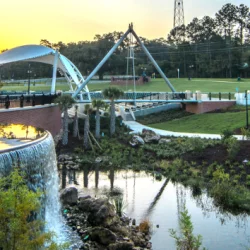Mexico Real Estate: a Great Alternative to U.S. Real Estate
For U.S. investors seeking opportunities but feeling like the time just isn’t right to jump back into the U.S. housing market, real estate in Mexico is an excellent alternative to consider right now.
The U.S. real estate market continues to suffer due to a lack of available credit caused by banks tightening lending standards, but developer financing at reasonable interest rates is frequently available in many areas in Mexico. Cash is still king in any market, but cash offers made in Mexico can net buyers significant leverage during negotiations with sellers and a substantial discount on the price of a property.
Opportunities for Growth
According to the most recently released S&P/Case-Shiller Home Price Index, prices rose nationally in the U.S. by 3.6 percent year-over-year in the third quarter of 2012, marking six straight months of gains. This data, however, doesn’t mean the U.S. housing market is out of danger yet. The U.S. market remains risky for investors because of threats like the fiscal cliff, increasingly likely prospects for higher tax rates, potentially slowing growth and the possible elimination of the mortgage interest deduction.
The Mexican economy is fired up and growing at almost twice the rate of the U.S. economy. Growth in Mexico is expected to hit five percent in 2012 according to predictions made by top Mexican government officials and reported by Forbes. This translates into decreased risk for investors who are ready to buy now and unwilling to wait to see the results of negotiations currently taking place within the U.S. government.
Beachfront Prospects
Most coastal areas in the U.S. are already fully established, but many areas in Mexico remain undeveloped or underdeveloped, representing significant opportunities for substantial growth in investments that are made soon. Resort areas in Mexico are expanding at an extraordinary pace considering the depth of the recent recession.
Contrary to common belief, U.S. citizens can own property located within 50 kilometers of the coastline or 100 kilometers of the border by obtaining a 50-year renewable and transferable bank trust. A trust is set up through a public notary, or notario publico, an attorney who is appointed to the position by the state governor, although it should be noted that a bank trust entails additional costs for the purchaser.
Colonial Charm
There are also many areas in Mexico that have a European flair and an old-world allure that simply can’t be found in the U.S. Towns such as Merida in the Yucatan and Loreto on the east coast of Baja California Sur are attracting droves of expatriates of all ages from all over the world. These newly relocated expats are not only driving growth in real estate markets, but many are starting businesses that are also funneling dollars into local economies at unprecedented levels.
These areas are becoming increasingly attractive to retirees, especially those from the U.S. and Canada, whose retirement savings and Social Security payments can be stretched far beyond what could ever be achieved in their home countries. The low cost of living and wide availability of reasonably priced health care can create a standard of living far greater than expected, even for retirees on comparatively small fixed incomes. Favorable exchange rates between the dollar and the peso further extend these benefits.
According to Pew Research Center statistics, Approximately 10,000 Baby Boomers are turning 65 daily in the U.S. alone. This demographic shift means that Mexico can expect to see a rapidly increasing population of expatriates for the foreseeable future, and these retirees will be bringing their nest eggs and Social Security checks with them. Investors who have the foresight to get into the Mexico Real Estate market now will reap the most significant share of profits from this trend.
Kurt Holstein is a foreign investment blogger
More to Read:
Previous Posts:




